Early Verdict
Builders with a big enough CPU cooler or lower heat CPU may find acceptable value in the Raidmax Delta.
Pros
- +
Low cost
- +
Good fit and finish
- +
Good noise isolation
- +
Supports 3x 120mm and 2x 140mm radiators behind front panel
Cons
- -
No front-panel dust filtration
- -
Thin materials reduce sturdiness
- -
Max 8” power supply depth with 3.5” trays installed
- -
Single installed fan insufficient for hot hardware
Why you can trust Tom's Hardware
Features & Specifications
With the Delta I, Raidmax hopes to offer a reasonable case option for buyers who’ve spent most of their limited budget on graphics. It is sold as model number Delta-I-WB, but Raidmax marketing decided to simply call it the Delta.
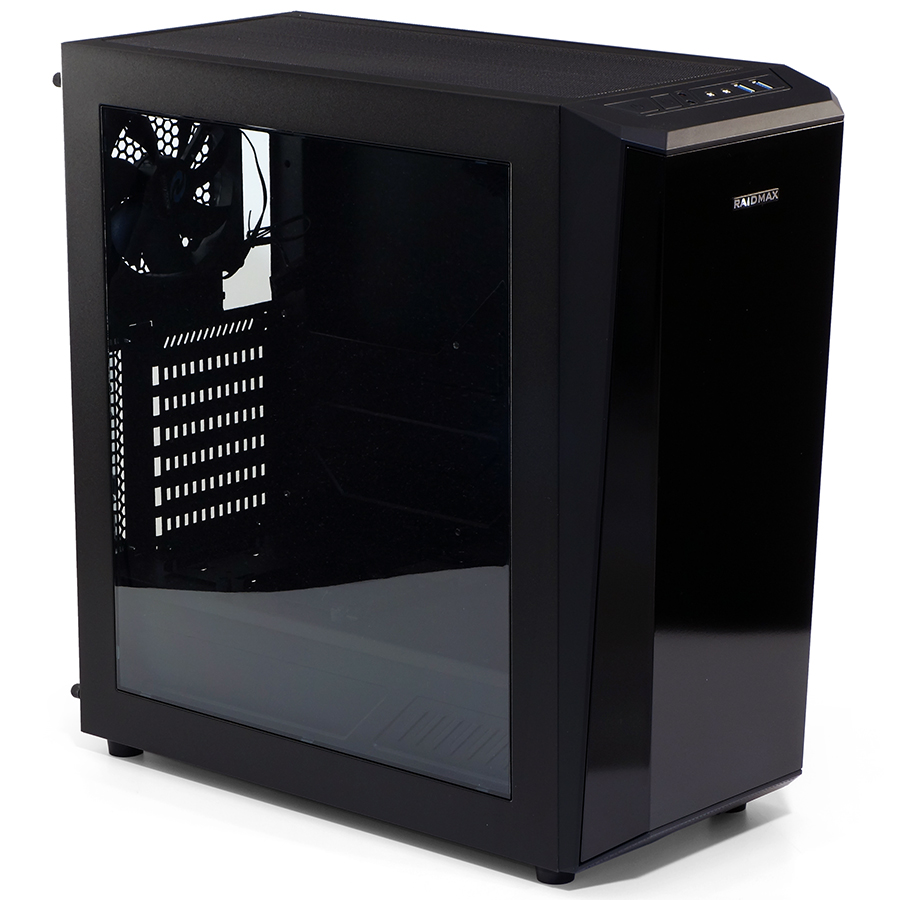
The painted steel front panel inlay is also available in Blue or Orange as Raidmax models Delta 13WU and Delta 13WO.
Specifications
MORE: Best PC Builds
MORE: How To Build A PC
The Delta differs from the recently reviewed Raidmax Alpha by having its front panel connectors and buttons on top, as well as its lack of LED lighting. The lack of lighting allowed Raidmax to rid the front panel of the old-fashioned grill and light diffuser found on the Alpha, for a smooth and glossy appearance. It’s also $10 cheaper at full price, and recent rebates have even pushed the price as low as $35. Fit and finish are still on par with mid-market competitors, again supporting the concept that selecting this case could be a good way to save money.

The front panel control section has only a pair each of buttons, activity lights, headset jacks, and USB 3.0 ports. Behind it, a magnetically attached sheet acts as the case’s primary dust filter.
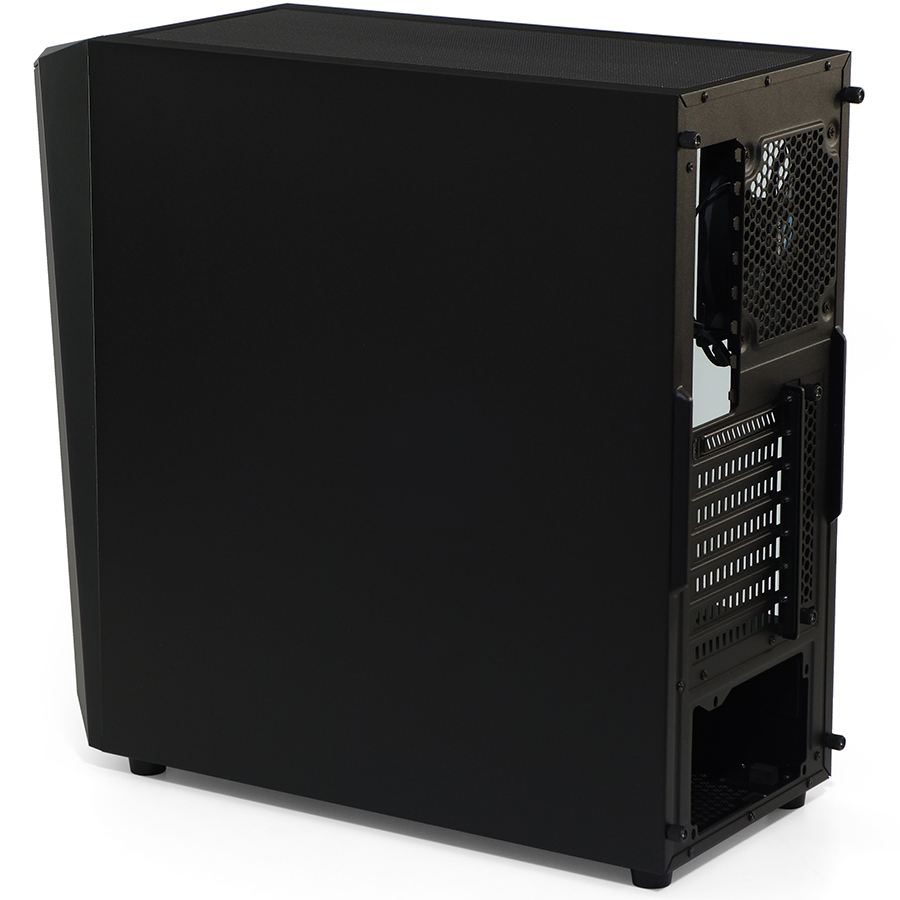
The rear panel and right side panel have no added features, and six of the seven slot covers are even non-replaceable knock-outs. Raidmax was kind enough to use thumb screws in the most appropriate locations.
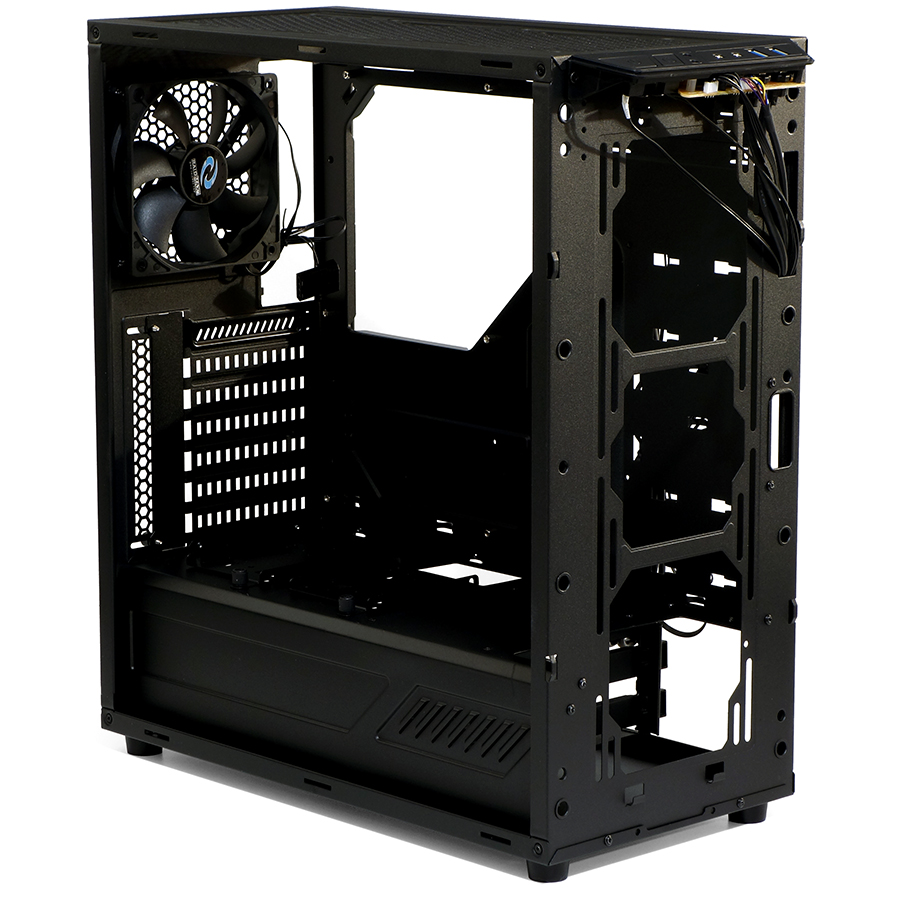
The port section stays attached to the Delta’s chassis to ease face panel removal, where we find room for three 120mm or two 140mm fans. Radiators up to 17.2” long can be placed behind the front of the chassis, accommodated by a 2.4” cutout in the power supply shroud. Unlike the Alpha, the Delta even has enough space between the face panel and the front of the chassis structure to accommodate a second set of fans, encouraging push-pull radiator fan configurations. The only thing missing is a front panel dust filter.

One might be tempted to use the top panel dust filter to cover any front fans, since it’s surrounded by a magnetic strip. The top panel also supports 3x 120mm and 2x 140mm fan configurations, though there’s not enough room above the motherboard to add a radiator with those fans. The top of the power supply shroud can also be seen from this angle, complete with its two 2.5” drive trays, four screws securing the 3.5” drive cage beneath it, and forward gap for front panel radiator clearance.
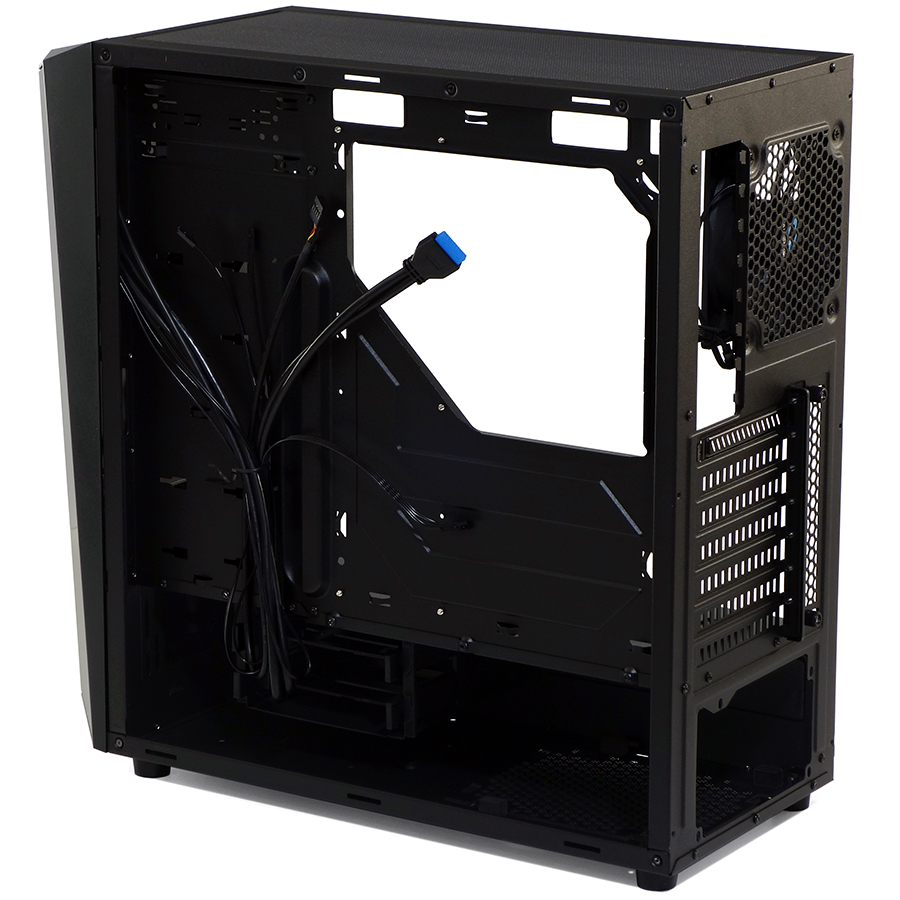
Like the Alpha, the Delta supports alternate placement of its 2.5” trays in a stepped-in section forward of the motherboard tray. The Alpha and Delta are in fact two different configurations of the same basic chassis, with only the removable parts altered.
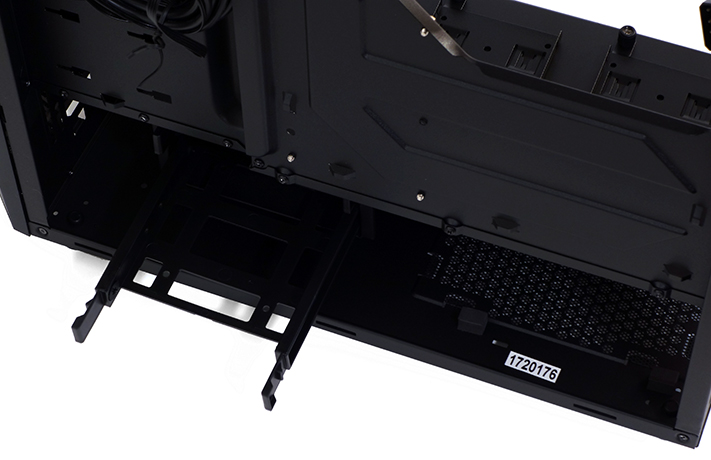
The Delta uses a different 3.5” drive cage than the Alpha, but the mounting holes remain unchanged. The different design adds a little space for longer power supplies, but that drive cage still must be removed to use any power supply longer than 8.06”.
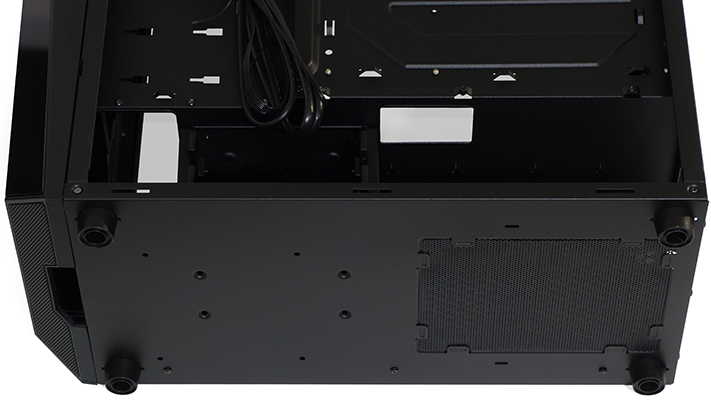
The power supply gets its own dust filter, which is secured with catch tabs.
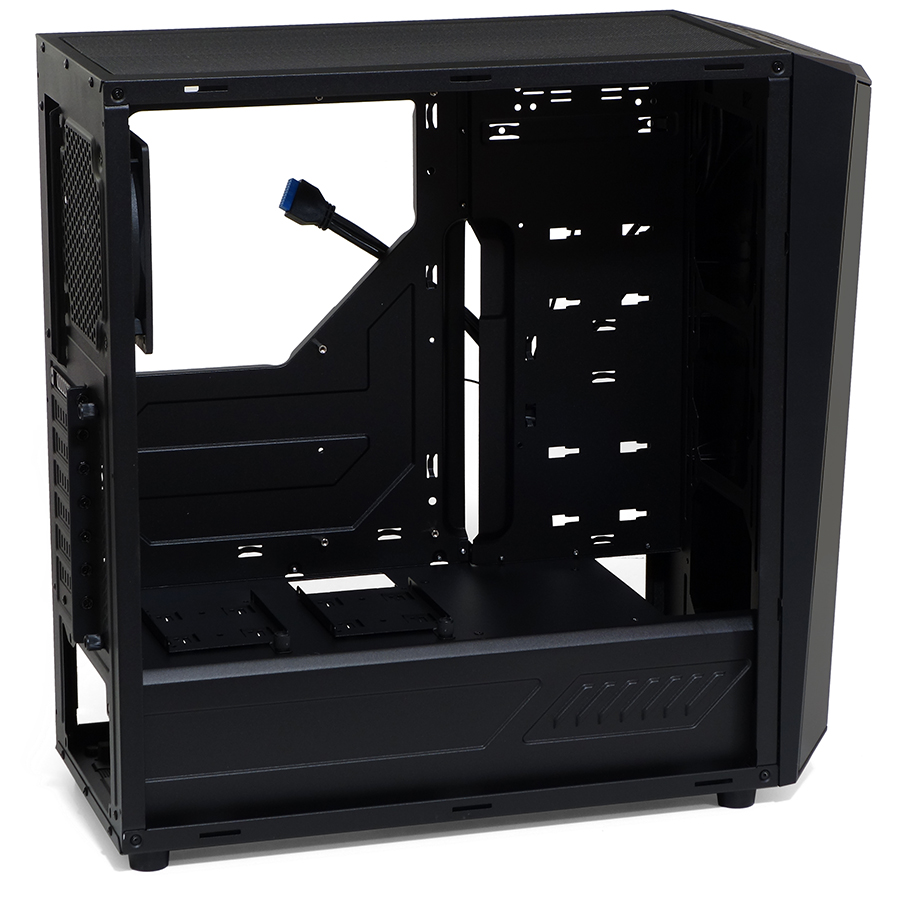
From this angle, it’s easy to see how the section in front of the motherboard is designed to ease cable passage to forward-facing ports. It barely fits under the leading edge of long graphics cards, affording it the optimal space for cable ends. Designed chiefly for the 9.6”-deep ATX motherboard form factor, it provides 10.3” of total clearance.
MORE: Best Cases
MORE: All Case Content
-
thundervore I was understanding of this case until I saw the crappy PSU dust filter, no cut out for the cables for the second drive on top of the PSU, plastic case feet, and only 2 USB front ports.Reply
For ATX cases, 4 ports are a minimum
